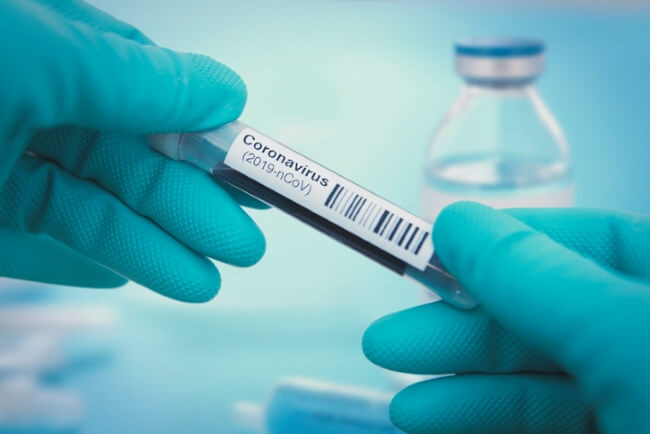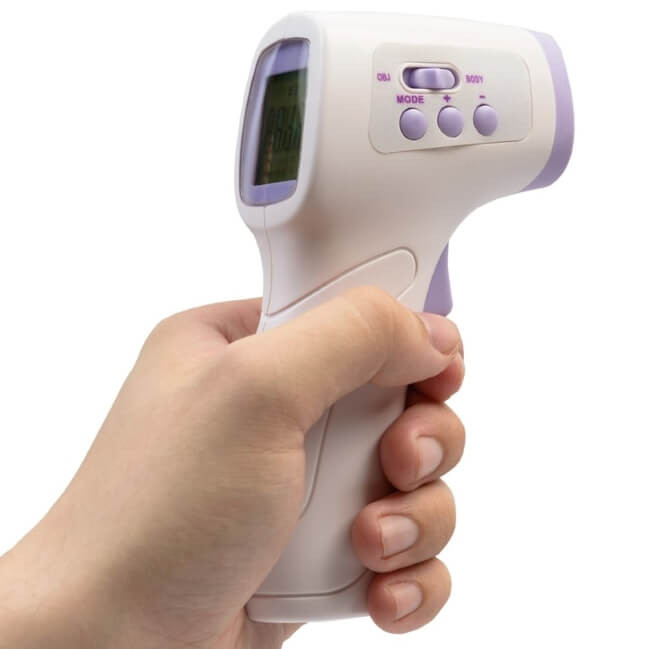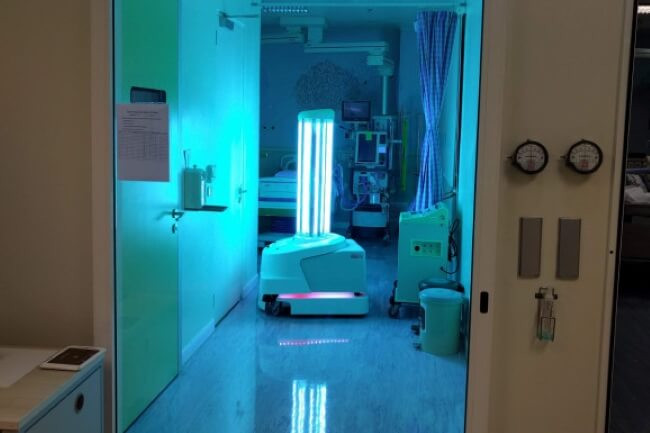How Are Electronics Being Used in the Fight Against the Coronavirus Pandemic?
| 23-03-2020 | By Liam Critchley
The world is currently in a state of crisis. The recent coronavirus pandemic, codenamed COVID-19 or SARS-CoV-2 is wreaking havoc across many countries, leaving many deaths in its wake while shutting down modern-day life and travel as we know it. Even in today’s highly advanced and medically adept society, suppressing the virus has required extreme measures of isolation and social distancing on a scale never seen before and it’s thought that the current crisis could continue for 18 months if it is not handled correctly.

Like any virus, there are some tell-tale signs if a person is carrying coronavirus. While some mild symptoms may go unnoticed or mistaken for a common cold-like illness, a constant and persistent dry cough and a high temperature, i.e. a fever, are common COVID-19 symptoms. More severe symptoms adapt from these but noticing the key symptoms early on is vital for minimising the spread of the disease. One of the most common ways of doing so in key public places, such as at airports, country borders, city centres etc, has been to remotely record the temperature of people as they pass through designated zones. It’s a common process that has been seen at airports before now when there is a virus outbreak, and I myself have personally been scanned when passing into Hong Kong when there was a regional bird flu outbreak.
So, while the tests in the hospitals are conclusively stating whether a person has got the coronavirus, electronic monitoring devices are playing a key role in monitoring the general public at key locations and in locations where there are large clusters of people. While the people in most countries are being told to isolate, there are still places (at the time of writing) where large gatherings and the movement of people is still allowed to happen; and this is where electronic monitoring devices are playing their part in the fight against COVID-19.
How Temperature is Being Recorded
There are a number of different monitoring devices out there which are being used to directly tackle the spread of COVID-19 by recording the temperature of the general public. Regardless of whether the specific method is higher-tech or a more basic device, as they all revolve around remote temperature detection, and most use infrared waves to measure the temperature of the person/a group of people.

Non-Contact Infrared Thermometer
Infrared wave sensors are ideal as they are non-invasive, relatively inexpensive and can be used from a distance. They work along the principle detecting the infrared waves which are given off by the human body. The hotter a person is, the higher the number of infrared waves they will emit. Internal calibrations from the detector can then convert the concentration of infrared waves into electricity via a thermopile, outputting a temperature in the process. The forehead is typically chosen as the scanning location for two reasons. The first is that it is a large uncovered area of the skin, and the second is that the temporal artery lies just below the skin, leading to a much more accurate reading.
Examples of Devices on the Frontline of COVID-19
There are a number of devices out there, many of which work along similar principles. Some of the devices on the frontline are your basic infrared laser thermometer device (also known as an infrared laser gun). While there have been some reports about them being inaccurate, they are a method of scanning large crowds quickly and can be used to determine if anyone needs a more thorough examination, need to be isolated from the general public, or need to be sent to the nearest hospital for further testing. They are also much more portable and it’s often easier to obtain a quick reading than other methods.
Other devices are much more advanced in nature, such as thermal imaging cameras which give the user a picture of any localised heat spots on the person. Some are even wearable temperature monitoring devices. While thermal imaging cameras are generally more accurate, many of the more basic handheld sensors and monitoring devices are often more than sufficient for recording an accurate enough temperature to tell if someone is running a fever. In reality, all of the different thermal sensing approaches are needed, but their specific use depends on the specific environment where the temperature is being recorded.
The common things that unite all the devices on the frontline are that they are designed to measure the temperature of the person without needing to be in direct contact with the person being scanned. Where they differ is in the output, with some being just a temperature, others being a heat map, whereas others give regular updates to a smartphone or other handheld device. There are also reports of a number of drones/robotic devices being used in Chinese cities to take the temperature of up to 200 people a minute with only a 0.5 °C margin of error.
Areas Other Than Temperature Sensors
Many of the larger analysis methods – from drones to cameras that can measure multiple people simultaneously – also utilise AI, Internet of Things (IoT) and deep learning methods to more accurately analyse the data. AI is also being used to predict and monitor the spread of the disease across countries, to track the news coming out of each country regarding the number of cases of confirmed coronavirus, predict the survival chance of patients with severe coronavirus symptoms, and machine learning is specifically being used on CT scan data to detect coronavirus in patients and take the pressure off frontline radiologists.

UVD disinfectant robot spreads ultraviolet rays in hospitals to kill bacteria and viruses
Credit: UVD
There are also a number of biosensors being used in the molecular diagnostic platforms (i.e. the diagnostic tools) within hospitals to help with determining if a patient has the coronavirus. So, while temperature sensors are one of the main tools used to fight COVID-19, there are a number of electronics and software programs which are being used at different stages of the fight; and information gained at all stages of detection and care are all vital for developing effective treatments, therapies and vaccines in the near future.
Electronic Devices Against Viruses in the Future?
While there are a number of devices out there, it appears that there is a drive from the graphene industry to develop sensors which can be used to detect COVID-19. Graphenea, a company from Spain, is offering free graphene to researchers working on such diagnostic tools and Grolltex, from the USA, has already announced that it is working on a graphene biosensor that can run tests for several different viruses simultaneously and is very inexpensive. While it has not been designed specifically for COVID-19, Grolltex has stated that it could possibly be adapted to test for the COVID-19 virus strain. Whether graphene sensing platforms make it to the frontline is something that will only be known in due course, but it is something to look out for.
Read more articles related to the Coronavirus pandemic:
- Disinfection Robots Battle COVID-19 Spread
- Bluetooth wristband can make COVID-19 lockdowns unnecessary
- A Wireless and Wearable Polymer Temperature Sensor for Healthcare Monitoring
- Microfluidic Technology May deliver Cheap, Easy Coronavirus Test
- A Look at the Ventilators Used During the Coronavirus Pandemic

